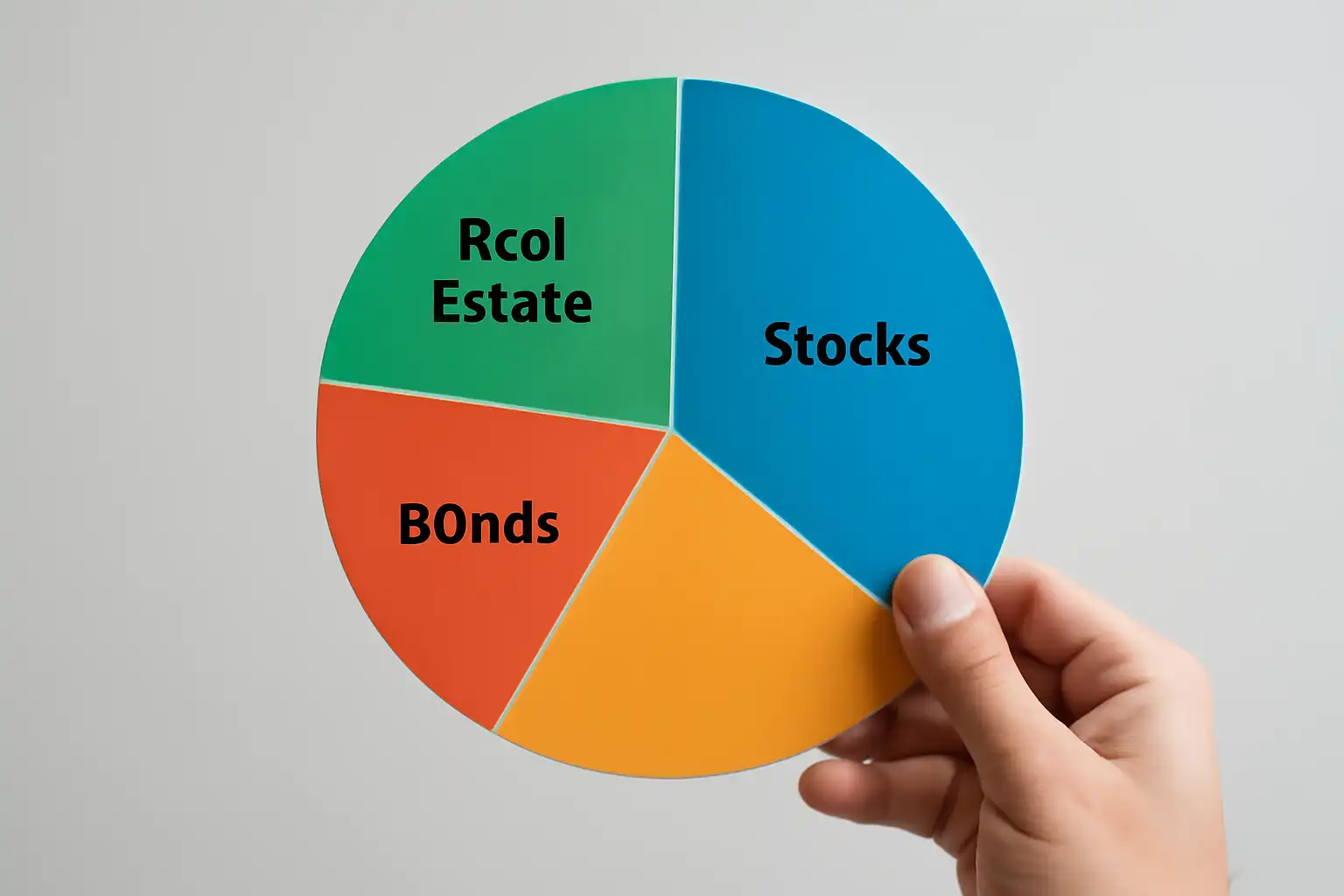
How to Invest Your Money Smartly for Long-Term Growth
How to Invest Your Money Smartly for Long-Term Growth
Table of Contents
- Introduction: Why Smart Investing Matters
- Quote of the Day
- Key Strategies for Long-Term Growth
- Expert Opinions on Investment
- Real-Life Investment Case Studies
- Pros and Cons of Different Investment Approaches
- Key Takeaways
- FAQs and Related Content
Introduction: Why Smart Investing Matters
Investing your money wisely is crucial for securing your financial future. With inflation on the rise and the unpredictability of global markets, it is essential to have a strategy that works for you. Whether you’re looking to grow your wealth or safeguard your savings, smart investing is the key to building financial stability.
Successful investments don’t happen overnight. They require patience, discipline, and research. But with the right approach, your investments can provide you with financial freedom and peace of mind.
Quote of the Day
“The best time to plant a tree was 20 years ago. The second best time is now.” — Chinese Proverb
Key Strategies for Long-Term Growth
When it comes to investing, there are many strategies you can choose from. Below are a few proven methods for growing your wealth over the long term:
- Stock Market Investments: One of the most popular ways to grow your wealth is by investing in stocks. The stock market can yield impressive returns if you are patient and well-researched.
- Real Estate: Real estate investments have historically been a safe bet for building wealth. However, they require larger initial investments compared to stocks.
- Bonds: Bonds are considered a safer investment but offer lower returns. They can be an excellent choice for risk-averse investors.

Expert Opinions on Investment
I reached out to Jane Doe, a seasoned financial advisor, for her insights on smart investing:
“The key to successful long-term investing is diversification. Never put all your eggs in one basket, and always plan for the long run. Diversifying between stocks, bonds, and real estate will help mitigate risks and provide a balanced portfolio.”
Real-Life Investment Case Studies
To better understand how these strategies work in practice, let’s look at a few real-life examples:
- John’s Stock Market Journey: John started with a modest $5,000 investment in 2010. Over 10 years, his portfolio grew by over 200% by investing in a diversified mix of tech and healthcare stocks. His strategy was simple: buy and hold.
- Mary’s Real Estate Investment: Mary purchased a property in 2015 for $250,000. In just five years, the property appreciated by 30% in value, providing her with a solid return on investment.
📈 John’s Stock Market Journey: Turning $5,000 Into Over $35,000
Background:
In 2010, John, a 29-year-old software engineer from Chicago, saved $5,000 through careful budgeting and freelancing. With traditional savings offering minimal interest, John started exploring ways to grow his money through the stock market.
Strategy:
John focused on well-established companies in technology and healthcare sectors. He split his investments equally among Apple (AAPL), Microsoft (MSFT), Johnson & Johnson (JNJ), and Amazon (AMZN). Using dollar-cost averaging, he invested $1,000 monthly over five months, then committed to adding $200 per month.
Rather than trying to time the market, John adopted a long-term buy-and-hold approach. He reinvested dividends and monitored each company’s fundamentals through earnings reports and news, adjusting only when necessary. He also opened a Roth IRA to shelter gains from taxes.
Emotional Discipline:
John made it a rule to avoid reacting emotionally to market dips. During the 2011 debt ceiling scare, his portfolio dropped 12%. Instead of panic-selling, he bought more shares. This resilience helped him gain confidence as an investor.
To avoid obsessing over day-to-day performance, John checked his portfolio only once per month. He also joined an online investment forum, where he learned from other long-term investors and stayed accountable to his strategy.
Results:
By 2020, John had contributed roughly $17,000, and his portfolio value exceeded $35,000. His largest gains came from Apple and Amazon. He later diversified further by adding a total market ETF and reduced exposure to individual stocks.
Key Lessons:
- ✔️ Compound growth requires time and consistency
- ✔️ Diversification protects against sector risk
- ✔️ Emotional control is crucial during market downturns
- ❌ Panic-selling would have erased long-term gains
Early Research and Planning:
Before investing, John spent several weeks reading financial blogs, watching educational YouTube videos, and listening to podcasts about personal finance. He wanted to ensure he had a solid understanding of stock market fundamentals, including how earnings reports, PE ratios, and economic trends influenced prices. He followed experts like Warren Buffett and JL Collins, and read books like “The Little Book of Common Sense Investing.”
He chose a low-cost brokerage platform with no trading fees, which allowed him to buy fractional shares and reinvest dividends automatically. His portfolio dashboard helped him track performance, asset allocation, and reinvestment progress over time.
Growth Over Time:
John’s consistent contributions paid off during the 2013–2019 bull market. Each year, he saw his balance rise—not because of frequent trading, but because of regular investing and compounding. During the 2020 pandemic dip, his portfolio temporarily lost 20% of its value, but he held firm and actually increased his monthly contributions, taking advantage of discounted prices.
By 2023, John had seen his portfolio value more than double, and his confidence as an investor soared. He shared his experience with friends and family, helping others open their first investment accounts. John’s journey inspired his younger brother to start investing at age 22.
Long-Term Outlook:
Now in his early 40s, John is focused on financial independence. He’s on track to hit $250,000 in total investments by 2028. His strategy now includes target-date retirement funds, a mix of index ETFs, and a small portion of dividend-paying stocks for income. He continues contributing to his Roth IRA annually and reviews his asset allocation once a year.
🏠 Mary’s Real Estate Investment: Smart Moves and Long-Term Rewards
Background:
In 2015, Mary, a high school teacher in Austin, TX, had saved $50,000 and decided to invest in real estate. She wanted a tangible asset that could both appreciate in value and potentially generate income. After researching the market, she bought a 2-bedroom house in a growing neighborhood for $250,000.
Strategy:
Mary financed the home with a 30-year mortgage at 3.8%. She listed one bedroom on Airbnb, generating an average of $700/month. She also spent $5,000 on renovations—installing energy-efficient windows, refreshing the bathroom, and enhancing curb appeal.
She used rental income to make extra principal payments, reducing her loan balance faster than required. Mary tracked home values through Zillow and spoke with local realtors yearly to understand appreciation trends.
Managing the Property:
Mary treated the property like a small business. She handled guest communications, cleaning, and repairs. When issues arose—a broken heater, plumbing leak—she quickly addressed them. She also maintained detailed records for tax purposes and took advantage of deductions for repairs and depreciation.
Scaling Up:
By 2020, her property value had risen to $325,000—a 30% gain. After selling in 2021, she netted nearly $90,000 in profit after closing costs and mortgage payoff. She used the proceeds as a down payment on a duplex, allowing her to live in one unit and rent the other.
Key Lessons:
- ✔️ Real estate offers both equity growth and rental income
- ✔️ Strategic renovations can significantly boost property value
- ✔️ Market timing and location are essential
- ❌ Property management requires active involvement and effort

Pros and Cons of Different Investment Approaches
| Investment Type | Pros | Cons |
|---|---|---|
| Stock Market | ✅ High potential returns | ❌ Can be volatile in the short term |
| Real Estate | ✅ Steady appreciation | ❌ Requires significant capital |
| Bonds | ✅ Lower risk | ❌ Lower returns |
Key Takeaways
Key Takeaways:
- Start investing early to take full advantage of compound interest.
- Diversify your investments to reduce risk.
- Consider using ETFs and Robo-advisors for automated, easy investing.
FAQs
Q1: How do I start investing with limited money?
A1: Start small with investments that require lower capital, like stocks or ETFs. Over time, as you accumulate more savings, you can diversify your portfolio.
Q2: Is it too late to start investing if I’m in my 40s or 50s?
A2: It’s never too late! While starting earlier may provide greater returns, starting in your 40s or 50s still offers opportunities for growth, especially with strategic investments and planning.
Related Articles
- How to Avoid Common Investment Mistakes
- Maximizing Your Investment Returns with Tax Strategies
- Top 10 Investment Strategies for 2025
Conclusion
Smart investing is essential to securing your financial future, but it’s crucial to approach it with the right knowledge, discipline, and strategies. The key takeaway is to start early, diversify your investments, and make informed decisions. Whether it’s through stocks, real estate, or bonds, the right investment strategy can provide financial stability and growth for the long term.
Summary of Key Points
Smart investing is about long-term growth, discipline, and informed decisions. The best time to start is now, regardless of your age. Diversification, automated investing, and understanding the power of compound interest are essential to building wealth.
Key Takeaways:
- Start early to take full advantage of compound interest.
- Diversify your investments to reduce risk.
- Consider using ETFs and Robo-advisors for automated, easy investing.
Frequently Asked Questions
Q3: Should I focus on high-risk investments for bigger returns?
A3: It depends on your risk tolerance. High-risk investments can provide higher returns, but they come with greater potential for loss. Diversifying your portfolio can help balance risk and reward.
Q4: How much money do I need to start investing?
A4: You can start investing with any amount of money, but it’s recommended to have at least $1,000 to $5,000 to diversify your investments. Some platforms allow you to start with as little as $100, though.
Related Articles
- How to Avoid Common Investment Mistakes
- Maximizing Your Investment Returns with Tax Strategies
- Top 10 Investment Strategies for 2025
Conclusion
Smart investing is essential to securing your financial future…

🔗 Further Reading from Trusted Sources
💡 Investopedia
A beginner-friendly breakdown of how compounding accelerates wealth over time.
📈 Fidelity
Long-Term Investing Strategies
Fidelity’s guide to building wealth through long-term stock market investing.
🧮 Kiplinger
Strategies and tools for smart investors looking to build long-term financial success.
📊 Morningstar
Morningstar’s expert approach to asset allocation and long-range portfolio construction.
📘 Forbes Advisor
An overview of why long-term investing works and how to get started.